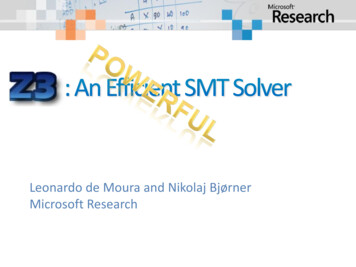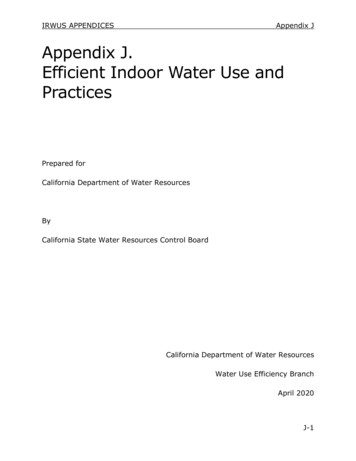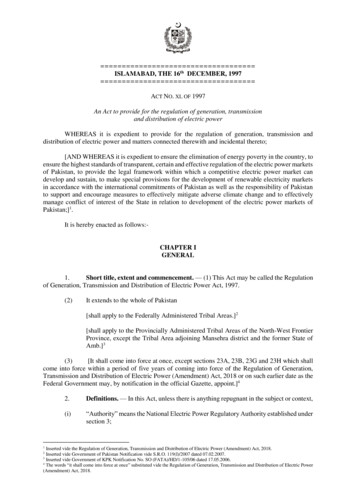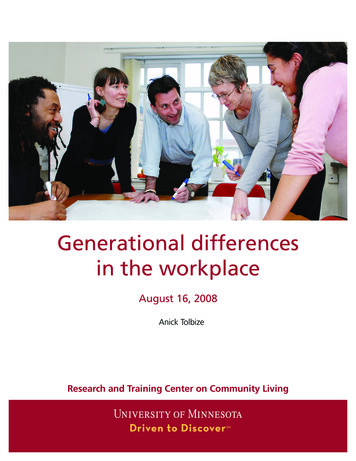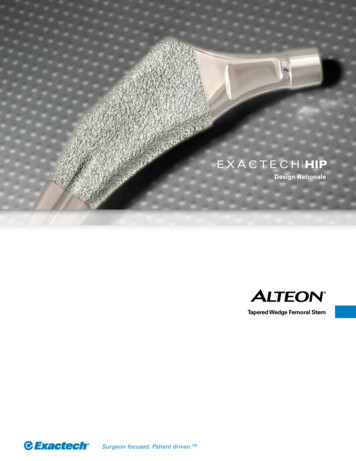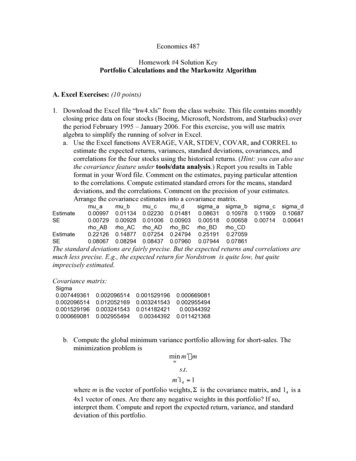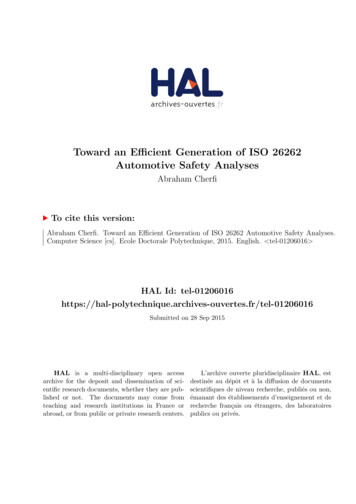
Transcription
Toward an Efficient Generation of ISO 26262Automotive Safety AnalysesAbraham CherfiTo cite this version:Abraham Cherfi. Toward an Efficient Generation of ISO 26262 Automotive Safety Analyses.Computer Science [cs]. Ecole Doctorale Polytechnique, 2015. English. tel-01206016 HAL Id: ertes.fr/tel-01206016Submitted on 28 Sep 2015HAL is a multi-disciplinary open accessarchive for the deposit and dissemination of scientific research documents, whether they are published or not. The documents may come fromteaching and research institutions in France orabroad, or from public or private research centers.L’archive ouverte pluridisciplinaire HAL, estdestinée au dépôt et à la diffusion de documentsscientifiques de niveau recherche, publiés ou non,émanant des établissements d’enseignement et derecherche français ou étrangers, des laboratoirespublics ou privés.
Toward an Efficient Generation of ISO 26262 Automotive SafetyAnalysesVers une Génération Efficace d’Analyses de Sûreté deFonctionnement dans le Cadre du Déploiement de l’ISO 26262PRÉSENTÉE LE 2 Juillet 2015A l’Ecole Polytechnique (Paris-Saclay)Ecole Doctorale Polytechnique (EDX)ÉCOLE POLYTECHNIQUEPOUR L’OBTENTION DU GRADE DE DOCTEUR DE L’ECOLE POLYTECHNIQUEPARAbraham CHERFIAcceptée sur proposition du jury :Président de Jury :Rapporteurs :Directeur de thèse :Examinateur :Leila KLOULKarama KANOUNJean-Marc FAUREAntoine RAUZYMichel LEEMANLaboratoire PRiSM, UVSQLAAS-CNRS, ToulouseLURPA, ENS CachanLGI, Centrale-SUPELECGEEDS, Valeo
RemerciementsAu terme de ce travail, c’est avec émotion que je tiens à remercier tous ceux qui ont contribué à la réalisation de ce projet, de près ou de loin.J'exprime mes profonds remerciements à mon directeur de thèse et mon encadrant industriel le professeur Antoine Rauzy et Michel Leeman pour l'aide compétente qu'ils m'ont apportée et leur patience.Leurs yeux critiques et leurs connaissances m’ont été très précieux pour structurer mes travaux durant cestrois années.Ensuite, je tiens à remercier Stéphane pour m’avoir accueilli au sein de son équipe, et mes collègues pourleurs soutien et encouragements : Ludovic, Nieves, Gilles, Elmahdi, Nabila, Styven, Riad, Tatiana, Michel,Pierre-Antoine sans qui ces trois années n’auraient jamais été aussi agréables.Je remercie aussi ma familles et mes amis pour m’avoir supporté tout au long de mes études ; en particulierma grande sœur pour ces précieux conseils.Et enfin, j'exprime ma gratitude aux membres de mon jury de thèse ayant accepté d’évaluer mes travaux.iii
AbstractCars embed a steadily increasing number of Electric and Electronic Systems. The ISO 26262 standard discusses at length the requirements that these systems must follow in order to guaranty their functional safety.One of the means at hand to ensure the automotive systems safety is to perform safety analyses. Duringthese analyses, practitioners perform FTA and FMEDA in order to evaluate the “trust” that we have in asystem. As big quantities of data are handled in those analyses, it would be of great help for them to havethe possibility to efficiently generate a part of them and check their consistency.This manuscript is the result of a thesis led on this subject. It focuses on the formalization of the data handled during the safety analyses in order to propose an efficient methodology for their generation. It presents the different works done, from the proposition of formal models for the safety related element behavior representation to the design and implementation of a process for consistent FMEDA generationbased on Fault tree patterns.KeywordsFunctional Safety, Markov Chains, Automated Generation, Safety Mechanisms, Fault Trees, FTA, Coverage,AltaRica3.iv
RésuméLa complexité et la criticité des systèmes électroniques embarqués automobiles est en augmentation constante. Un nouveau standard concernant la sûreté de fonctionnement automobile (ISO 26262) permetd'établir un cadre et de définir des exigences sur les systèmes concernés afin de garantir leur sécurité.Un des moyens permettant de vérifier la sûreté de ces systèmes consiste à effectuer des analyses dites desureté de fonctionnement. Au cours de ces analyses, les praticiens effectuent des analyses de type FTA etFMEDA afin d’évaluer robustesse et la sûreté de ces systèmes. Lors de ces analyses, les praticiens manipulent une masse de données de plus en plus conséquente ; Ce qui a créé le besoin d’avoir un moyen de générer une partie de ces données efficacement et de vérifier leur cohérence.Dans ce manuscrit, nous détaillons les travaux que nous avons effectués sur ce sujet, en nous concentrantprincipalement sur la formalisation des données manipulées durant les analyses de sûreté de fonctionnentafin de proposer une méthode efficace pour leur génération. Nous y présentons les différents travaux réalisés, de la proposition de modèles formels pour la représentation du comportement dysfonctionnel« d’élément lié à la sûreté » à la conception et mise en œuvre d'un processus pour la génération de FMEDAcohérentes à partir d’arbres de défaillances.Mots-clésSûreté de fonctionnement, Chaines de Markov, Génération Automatique, Mécanismes de Sûreté, Arbres dedéfaillances, AdD, AltaRica3.v
ContentsRemerciements . iiiAbstract . ivKeywords. ivRésumé . vMots-clés . vList of Figures . ixList of Tables . 11Chapter 1Introduction . 151.1Context Presentation .151.2Thesis subject presentation .15Chapter 2Automotive Safety : State of Practices . 192.1Automotive Systems Safety & ISO 26262 .192.2Basic Concepts of Dependability & ISO 26262 .202.2.1 From Dependability Attributes to Automotive Safety Integrity Levels .202.3Valeo Safety Methodology.222.3.1 Safety Analyses .232.4State of the Art.242.4.1 FMEA generation from functional models .252.4.2 FMEA generation from architectural models .262.4.3 FMEA generation based on safety models .262.4.4 Discussion .272.5Thesis Approach .27Chapter 3Setting the Foundation: Safety related Elements Behavior . 313.1Two Typical Examples of Safety Mechanisms .313.1.1 Vehicle Management Unit for Inversion .31vi
Contents3.1.2 Electric Driver Seat Controls .323.1.3 Discussion .333.2Generic Markov Models.333.2.1 Case of a Hardware Block protected by a First Order Safety Mechanism Based on ErrorDetection .343.2.2 Case of a Hardware Block protected by First Order Mechanism based on Error Detectionand a Second Order Safety Mechanism .353.2.3 Case of a Hardware Block protected by a First Order Safety Mechanism based onInhibition and a Second Order Safety Mechanism. .363.3Experimental Study for Detection Based Safety Mechanisms .373.3.1 Realistic Values of the Parameters .373.3.2 Most Influential Parameters .393.3.3 Influence of Other Parameters .413.3.4 Wrap-Up .433.4Related Works .433.5Conclusion .44Chapter 4Making it Practical : Fault Trees Approximations . 464.1Fault Tree Patterns Presentation .464.1.1 FT Model with Classic SM Representation for SM2.474.1.2 FT Model with Maintenance.484.1.3 FT Model with Periodic Tests.494.1.4 FT Model without SM2 .514.2Experimental Study .514.2.1 Realistic Values and Test Sample Description .514.2.2 Experimentation Results .524.2.3 Synthesis .574.3Conclusion .57Chapter 5Specific Developments for ISO26262 Safety Analyses . 615.1Overall Process .615.2Coverage Gate .625.3Architectural metrics calculation .645.3.1 ISO 26262 Architectural Metrics presentation .645.3.2 Architectural Metrics Calculation from fault trees .66vii
Contents5.3.3 Application Example .715.4FMEDA Generation Methodology.735.4.1 Qualitative & Quantitative FMEDA Templates .745.4.2 Qualitative FMEDA Coherence regarding Fault Trees Report .755.4.3 Quantitative FMEDA Generation from Tagged Fault Trees .775.4.4 Complete FMEDA Generation .805.5About the Implementation .805.6Conclusion .81Chapter 6Toward a model based generation of the safety analyses . 846.1AltaRica 3.0 Models .846.2AltaRica 3 Models for the Vehicle Management Unit for Inversion .846.3AltaRica 3 Models for Electric Driver Seat Control .876.4Reachability Graphs .896.5Conclusion .89Chapter 7Conclusion . 93Annex A FMEDA Generation Example. 95References . 112viii
List of FiguresFigure 2:1 The Ten Parts of the ISO 26262 (ISO 26262, 2011) . 20Figure 2:2 Overall safety process description . 22Figure 2:3 Safety analyses activities overview . 23Figure 2:4 Simplified HiP-HOPS process overview . 25Figure 2:5 Simplified MéDISIS process overview . 26Figure 2:6 Simplified SimFia process overview . 27Figure 3:1 Simplified functional representation of the Vehicle Management Unit forInversion. 32Figure 3:2 Functional representation of an Electric Driver Seat Control . 33Figure 3:3 Generic Markov chain for a Hardware Block protected by a first order SafetyMechanism based on error detection. 34Figure 3:4 Generic Markov chain for a Hardware Block protected by a first order SafetyMechanism based on error detection and a second order Safety Mechanism. . 35Figure 3:5 Generic Markov chain for a Hardware Block protected by a first order SafetyMechanism based on inhibition and a second order Safety Mechanism. . 37Figure 3:6 Unfolded view of the Markov chain representing hardware block protectedwith a first and second order mechanisms based on error detection. . 39Figure 3:7 Variations, mutatis mutandis, of the failure probability with respect to thefailure rate HB of the hardware block (with SM1 1.00E-6 h-1, DC1 99%, SM2 1.00E-6h-1, DC2 99%, TJ 1h, TM 10h). 40Figure 3:8 Variations, mutatis mutandis, of the failure probability with respect to thediagnostic coverage DC1 of the first order safety mechanism. . 41Figure 3:9 Influence of other parameters (but HB 1.0E-6) in case of an imperfectdiagnostic coverage of the first order mechanism (DC1 99%). 42Figure 4:1 ISO 26262 fault tree representation of a function failure with first order SM . 47Figure 4:2 Fault tree pattern with a second mechanism represent as a classic safetymechanism . 48Figure 4:3 Fault tree pattern that takes into account the maintenance action of the 2 ndorder Safety mechanism . 49Figure 4:4 Fault tree pattern for the representation of the second order safetymechanism periodical testing behavior . 50Figure 4:5 Failure probability progression in the last hour of a vehicle lifetime computedwith a periodic fault tree model . 55ix
List of FiguresFigure 5:1 ISO26262 Specific developments plan for safety analyses generation . 61Figure 5:2 Coverage gate custom pattern (Graphical representation Open-PSA XML). 62Figure 5:3 Coverage Gate Fault Free existing parsing and translation possibilities . 63Figure 5:4 OpenPSA code obtained when generating Classic Or/and tree from a coveragegate pattern . 64Figure 5:5 Single Point Fault Metric Formula. 65Figure 5:6 Single Point Fault Metric Formula . 65Figure 5:7 ISO 26262 Specific developments plan for architectural metrics generation . 67Figure 5:8 Rearranged fault classification diagram. 68Figure 5:9 Tagged fault tree simplified example for the representation of the generationof a wrong three-phase current for an electric motor . 72Figure 5:10 Generated Coherence Report Examples for a Slightly Modified ISO26262 Part5 Annex E SG02 Safety Analyses . 77Figure 6:1 Reachability graph of the VMU AltaRica 3 Model matched with the unfoldedview of the corresponding Markov Model. . 89Figure A:1ISO 26262 Annex E SG2 coverage gates fault tree . 97x
List of TablesTable 2:1 Definition of the Safety-ASIL Matrix (ISO 26262, 2011) . 21Table 3:2. Typical Values of Parameters . 38Table 3:3 Quotient of the probability of failure divided by HB for different mission times40Table 3:4 Influence of other parameters (but HB 1.0E-6) in case of a perfect diagnosticcoverage of the first order mechanism (DC1 100%). . 43Table 5:1 ISO 26262 Part 5 Annex C definition of fault types . 64Table 5:2 Basic events failure rates for the wrong three phase current generation faulttree . 72Table 5:3 Qualitative FMEDA header . 74Table 5:4 Quantitative FMEDA header . 7511
CHAPTER 1INTRODUCTION13
Chapter 11.1IntroductionContext PresentationCars embed a steadily increasing number of Electric and Electronic Systems. Since the end of the 90’s, automotive industry has changed its way to design vehicle and the underlying systems that compose thesevehicles. Back then, the systems were designed following a federal architecture where one ECU was dedicated to one function or service.The innovation pace have risen, particularly in electronics and computing which lead to replace mechanicand hydraulic commands by electronic components. Back then, each function of the car was developedindependently from the others.These embedded systems cover a large spectrum of the systems. Each system have now the followingproperties: A system fulfills several functions. And a function necessitates multiples systems to be fulfilled.Thus, systems are interconnected and communicate between each other.The main advantage of this architecture is the reduction of the number of systems and ECU in the vehicle.However, it increases significantly the complexity of each of them.With the growth of the complexity of the vehicles, the need to ensure their functional safety became moreand more important. Thus, functional safety processes started to be implemented and followed by the automotive actors (constructors, tier 1 ).In 2011, ISO26262 standard was published (ISO 26262, 2011). This standard defines a number of constraints and rules that the development of automotive electric and electronic systems must obey in orderto ensure their functional safety.Since then, all the automotive industry actors must follow the requirement of this standard in order to produce “safe” cars.1.2Thesis subject presentationThe main objective of this thesis was to assess the functional safety process at Valeo and propose a solutionfor the generation of safety analyses. By analyzing it, our goal was to define the key points to work on inorder to ensure the compliance to ISO26262, and define an efficient way to simplify the safety analyses andtheir generation.In the following chapters, we first give an overview of the state of practices for the automotive functionalsafety: we first present the various activities composing the safety process; we give a fast study of the stateof the art for the safety analyses generation and defend our research plan.15
IntroductionFollowing this, we present the result of our study on the automotive safety related elements: we focus onthe safety mechanisms, study their failure behavior by representing them with the help of Markov chainsand define the importance of the parameters characterizing them.Next, we define and test fault tree patterns that represents these safety mechanism efficiently: based onthese patterns, we define processes for ISO26262 specific developments (like metrics calculation) andFMEDA generation/check.And finally, we provide high level models for the representation of automotive safety mechanisms: we define classes for each type of safety mechanisms based on known examples.16
CHAPTER 2AUTOMOTIVE SAFETYSTATE OF PRACTICES17
Chapter 2tices2.1Automotive Safety : State of Prac-Automotive Systems Safety & ISO 26262Since the beginning of the 21th century, the integration of E/E systems in automotive vehicles has startedto rise up the problem of multi-critical systems. Indeed, developed systems integrate both critical and noncritical functions. A function is considered as critical if it could lead to an Undesired Event (which causes anaccident).Moreover, many actors are involved in the development process of a car: car manufacturer and severalsuppliers (Tier 1, Tier 2 ) which develop the products of the system defined by the OEM. Each companyhas its own development process; therefore it is necessary to define and follow robust design rules withdocuments and processes ensuring traceability.Before 2011, as there were no directives on functional safety in the automotive industry, only a few companies decided to adhere (voluntary) to the state of the art defined in the IEC 61508 (IEC 61508, 2010).IEC 61508 focuses on the overall development process of a system and the steps that have to be respectedin order to achieve functional safety of electrical components. Particularly, it defines achievable goals forthe specification, the design, the implementation and assessment of electrical/electronic programmablesystems.Since 2011, a derived version called ISO 26262 (ISO 26262, 2011) is used. This Standard is the result of thework between the major companies of the automotive domain in order to specify best practices for thedocumentation, the interactions between actors and the methods and techniques to justify the functionalsafety of automotive systems. This facilitates exchanges between OEMs and Suppliers by giving requirements to achieve.Safety is divided into non-functional safety and functional safety:-Functional safety addresses possible hazards caused by malfunctioning behavior of E/E systems including interaction of these systems. Typical examples of functional hazards are: steering columnlock, engine racing and loss of front lighting.-Undesired events such as electric shock, fire, smoke, heat, radiation, toxicity, flammability, reactivity, corrosion, release of energy, are considered as non-functional unless directly caused by malfunctioning behavior of E/E safety-related systems.Technical measures considered in a design to cope with non-functional safety UEs are generally only basedon fault avoidance (suppression of potential root causes).19
Automotive Safety : State of PracticesTechnical solutions to cope with functional safety UEs are based on fault avoidance and fault tolerance(avoid faults propagation).The scope of ISO 26262 is on functional safety of automotive E/E systems. The standard defines functionalsafety as “absence of unreasonable risks due to hazards caused by malfunctioning behavior of E/E systems”The ISO 26262 is divided in ten parts described in Figure 2:1.Our work deals with the Part 4 and Part 5 which give all the safety requirements for the development ofhardware automotive system. However, other parts are also very helpful for the understanding of theserequirements and their application especially Part 10.Figure 2:1 The Ten Parts of the ISO 26262 (ISO 26262, 2011)2.2Basic Concepts of Dependability & ISO 26262Dependability is a key concept of any critical system. It could be seen as the aptitude to avoid the failuresthat occur during a service delivering. This service corresponds to the behavior perceived by the users (human or not) in interaction with the service.Dependability is a well-documented concept, on which has been defined a complete taxonomy (Avizienis,et al., 2004). Indeed, dependability is defined by 6 main attributes, three treats and four categories ofmeans.2.2.1 From Dependability Attributes to Automotive Safety Integrity Levels2.2.1.1 Dependability AttributesIn order to characterize the quality of a delivered service, dependability takes in the following attributes:20
Automotive Safety : State of Practices Availability: readiness for correct service;Reliability: continuity of correct service;Safety: absence of catastrophic consequences on the user(s) and the environment;Confidentiality: absence of unauthorized disclosure of information;Integrity: absence of improper system alterations;Maintainability: ability to undergo modifications and repairs.Depending on the industrial field, the significance of each attribute varies. This choice is based on the objectives that should be achieved by the developed service. For example, in transportation fields, reliabilityand safety are of prime priority; although, the rise of connected vehicles challenges increases the confidentiality importance.In other fields, like communications, prime priority is given availability, reliability. Particularly, automotivesystems are mainly focused on safety, availability and reliability attributes.2.2.1.2 Automotive Safety-Integrity LevelIn ISO 26262 Standard, a functional Undesired Event (UE) is rated according to its criticality on a five levelscale (QM, ASIL A, ASIL B, ASIL C and ASIL D). The least critical effects are rated QM (Quality Management)and no specific safety requirement are associated to it in the standard. The most critical effects are ratedASIL D. A system functional UE with an ASIL is also called a hazard.When assigning these levels, three parameters must be taken into account, see:-Severity: Based on the severity of the potential injured or killed persons in the incid
Toward an E cient Generation of ISO 26262 Automotive Safety Analyses Abraham Cher To cite this version: Abraham Cher . Toward an E cient Generation of ISO 26262 Automotive Safety Analyses. Computer Science [cs]. Ecole Doctorale Polytechnique, 2015. English. tel-01206016 HAL Id: tel-01206016 https://hal-polytechnique.archives-ouvertes.fr/tel .
